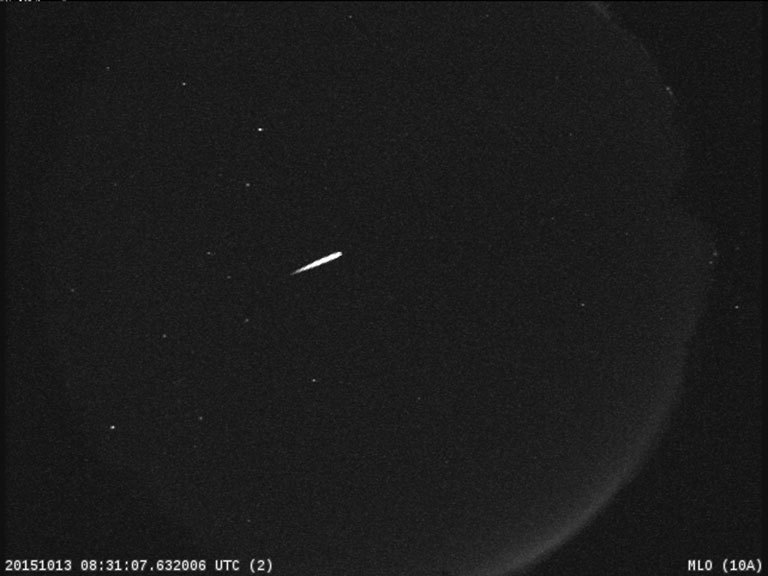Adler Skywatch: October 2019

Header Image: Orionid meteors appear every year around this time when Earth travels through an area of space littered with debris from Halley’s Comet. Credit: NASA/JPL
The days are getting shorter and the nights are getting longer this month, October 2019. But the longer nights mean more night-sky objects to observe.
During evening twilight this month, the planets Jupiter and Saturn are readily visible in the south-southwest sky during evening twilight. Jupiter is the brighter of the two, situated between the Teapot asterism that marks the constellation Sagittarius and the predominantly S-shaped constellation Scorpius. To the lower-right of Jupiter is the reddish star Antares, the “heart” of Scorpius; and to the left and slightly above Jupiter is the planet Saturn, floating to the left of the Teapot. The evening of the 3rd, Jupiter appears close to the bright edge of a waxing crescent Moon. And the evening of the 5th, Saturn is near the upper-right of the First-Quarter Moon.
For those of you lucky enough to have a clear sight-line to the west-southwest, there’s even more planetary action in store. Soon after sunset, the planets Venus and Mercury are barely above the west-southwest horizon. They are visible for only a short time before they set, following the Sun. Venus is by far the brighter of the two, as it’s also the brightest planet in the night sky; but Mercury is brighter than most of the nearby stars as well. As the Sun sets earlier each day this month, the two planets get a little easier to see in the darkening sky. In the early evening of the 29th, a very slim waxing crescent Moon appears above the two planets.
There is one other planet readily visible to the unaided eye; but this month it’s not visible until morning twilight. Shortly before sunrise, the planet Mars rises in the east. It’s not very bright this month, and it doesn’t get far above the eastern horizon before dawn’s light blots it from view. With the Sun rising later each morning this month, Mars gets a little higher in the sky and easier to see before sunrise.
The annual Orionids meteor shower peaks this month the night of the 21st into the early-morning darkness of the 22nd. The waning crescent Moon rises shortly after midnight, causing some light interference in meteor viewing. As always, the darker the sky the better the viewing; so if you plan to look for Orionids, find a place away from artificial lights. No special equipment is needed to view meteors—just find a clear place and look up.
A maximum of perhaps ten Orionid meteors per hour is expected if skies are very dark and very clear.
First Quarter Moon: October 5th
Full Moon: October 13th
Last Quarter Moon: October 21st
New Moon: October 28th
Please note that these descriptions are for the Chicago area, using Central time.







